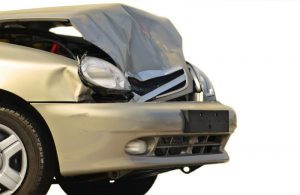Car Accident Lawsuits Against The At-Fault Driver
Although no-fault PIP benefits provide some compensation if you suffer a car accident injury, they will often be insufficient to fully compensate you for your losses. Many times, filing a car accident lawsuit — known as an “auto negligence claim” or “liability claim” — against the at-fault driver is the only way you can be fully compensated for your injuries.
 When you bring an auto negligence claim against the at-fault driver, you can only ask for two types of damages for your car accident injuries. These are damages that you would not be entitled to receive through your no-fault insurance benefits. They are:
When you bring an auto negligence claim against the at-fault driver, you can only ask for two types of damages for your car accident injuries. These are damages that you would not be entitled to receive through your no-fault insurance benefits. They are:
- non-economic damages — includes pain and suffering and other quality of life losses.
- excess economic loss damages — includes certain out-of-pocket expenses not paid by PIP benefits.
But in order to bring an auto negligence claim for these damages, strict requirements must first be met — which is why it’s important that you have an experienced Michigan auto accident lawyer by your side, to help you along the way.
Who Can Bring A Lawsuit Against The At-Fault Driver?
The first requirement for bringing a car accident lawsuit in Michigan is that you must be able to show that the other driver was at fault for the crash. The legal term for fault is “negligence,” which is simply the failure of a person to act as a reasonably careful person would under the same or similar circumstances. Typically, violations of the Michigan Motor Vehicle Code — such as speeding, failing to stop at a stop sign, failing to yield, running a red light, improper lane usage, etc. — are all evidence of negligence.
Meanwhile, even if you were partially responsible for the car accident, you may still recover damages in a lawsuit for your injuries. However, the amount of those damages will be reduced by the percentage of your own fault. This is referred to as “comparative fault.” For example, if the injured person is 20% responsible for the accident and the at-fault driver is 80% responsible, the victim’s damages will be reduced by 20%. However, if the victim is more than 50% negligent in causing the accident, Michigan law says the victim cannot recover any compensation for non-economic loss.
When seeking non-economic damages, in addition to showing that the other driver was negligent, Michigan law also requires you to show that your injuries are “serious enough” to bring the claim. This “serious enough” component is commonly known as a “threshold injury,” and is defined as a “serious impairment of body function,” “permanent serious disfigurement” or death. To help determine whether your injury meets this threshold standard, an experienced Michigan car accident lawyer needs to assess your case. (Note: claims for excess economic loss do not require proof of a threshold injury.)
In this video, a Sinas Dramis Grand Rapids car accident lawyer talks about the damages that are available from an at-fault driver.
Damages After A Car Crash – FOX 17 Know the Law
What Happens When Car Accident Injuries Result In Death?
When a person dies as a result of a motor vehicle collision, a special kind of tort liability arises known as a “wrongful death claim.” Wrongful death claims in Michigan are pursued by the decedent’s estate on behalf of family members.
Wrongful death lawsuits are governed by the Michigan Wrongful Death Act. In general, this law provides that close relatives of a deceased victim can seek compensation for the loss of financial support, loss of services and, perhaps most importantly, loss of the love, affection, companionship and society of their loved one.
Who Pays Damages For Car Accident Lawsuits?
Auto negligence claims are usually paid by the insurance company for the at-fault driver. If a lawsuit is filed to obtain compensation, the negligent driver must be individually named in the suit. The damages, however, will actually be paid by the at-fault driver’s insurance company, up to the total amount of liability coverage that the negligent driver purchased.
If you suffered damages that exceed the amount of liability coverage that’s carried by the at-fault driver, the driver may be personally responsible for the excess amount.
What If The At-Fault Driver Was Not Insured Or Had Minimal Coverage?
Issues can arise if the driver who caused the accident was either uninsured or underinsured. Uninsured means the at-fault driver carried no insurance at all at the time of the accident. Underinsured means the driver had insurance but did not carry enough to meet the full amount of the accident victim’s damages.
Because most people do not personally have the funds to fully compensate a car crash victim, inadequate insurance coverage can potentially leave an injured person without any way of fully recovering their damages. However, this problem can be avoided by purchasing “uninsured motorist coverage” and “underinsured motorist coverage.” Both types of coverage let car crash victims recover damages from their own auto insurance company when the at-fault driver doesn’t have any insurance or has insufficient insurance.
Uninsured and underinsured motorist policies are optional and are purchased in addition to a standard no-fault policy. Because the cost of each is relatively minimal, it is highly recommended that motorists purchase both types of optional coverages to protect themselves from drivers who do not have insurance or have minimal insurance.
Learn more about uninsured and underinsured motorist coverage in Michigan.
